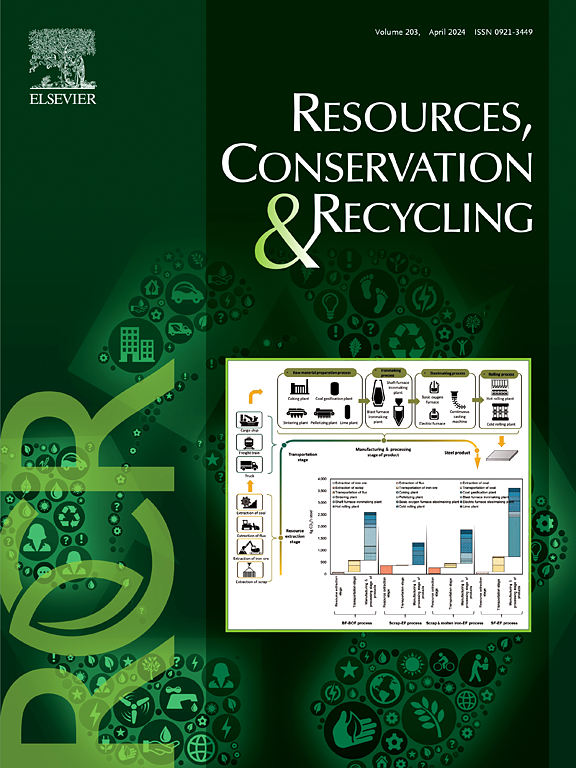Sustainable lithium production from sedimentary rock deposits: Carbon reduction and EV synergies
IF 10.9
1区 环境科学与生态学
Q1 ENGINEERING, ENVIRONMENTAL
引用次数: 0
Abstract
Amidst the surging global demand for lithium, essential for the transition to cleaner energy systems, the environmental impacts of its extraction have raised significant concerns. This study analyzes the environmental implications of lithium extraction from sedimentary rock deposits (claystone) compared to brine and hard rock resources using life cycle assessment. Results show that lithium production from sedimentary deposits emits 22.6 tons of CO₂eq per ton of lithium carbonate, with 65 % from carbonate mineral decomposition during leaching. To mitigate this, on-site sulfuric acid production and electricity generation from its heating process could reduce emissions to 18.2 tons. The study assesses lithium sourcing in the EV value chain, evaluating CO₂eq emissions for 1 kWh of NMC622 and LFP batteries. Findings show sustainable lithium sources can significantly reduce battery manufacturing's environmental impact.
沉积岩矿床可持续锂生产:碳减排和电动汽车协同效应
锂是向清洁能源系统转型的关键,随着全球对锂需求的激增,其开采对环境的影响引起了人们的极大关注。本研究利用生命周期评价方法,分析了沉积岩(粘土岩)中锂提取对环境的影响,并与卤水和硬岩资源进行了比较。结果表明:沉积岩产锂每生产1吨碳酸锂排放22.6 t CO₂eq,其中65%来自浸出过程中碳酸盐矿物的分解。为了缓解这一问题,现场硫酸生产和加热过程中的发电可以将排放量减少到18.2吨。该研究评估了电动汽车价值链中的锂资源,评估了NMC622和LFP电池每千瓦时的二氧化碳当量排放量。研究结果表明,可持续的锂资源可以显著减少电池制造对环境的影响。
本文章由计算机程序翻译,如有差异,请以英文原文为准。
求助全文
约1分钟内获得全文
求助全文
来源期刊

Resources Conservation and Recycling
环境科学-工程:环境
CiteScore
22.90
自引率
6.10%
发文量
625
审稿时长
23 days
期刊介绍:
The journal Resources, Conservation & Recycling welcomes contributions from research, which consider sustainable management and conservation of resources. The journal prioritizes understanding the transformation processes crucial for transitioning toward more sustainable production and consumption systems. It highlights technological, economic, institutional, and policy aspects related to specific resource management practices such as conservation, recycling, and resource substitution, as well as broader strategies like improving resource productivity and restructuring production and consumption patterns.
Contributions may address regional, national, or international scales and can range from individual resources or technologies to entire sectors or systems. Authors are encouraged to explore scientific and methodological issues alongside practical, environmental, and economic implications. However, manuscripts focusing solely on laboratory experiments without discussing their broader implications will not be considered for publication in the journal.
 求助内容:
求助内容: 应助结果提醒方式:
应助结果提醒方式:


